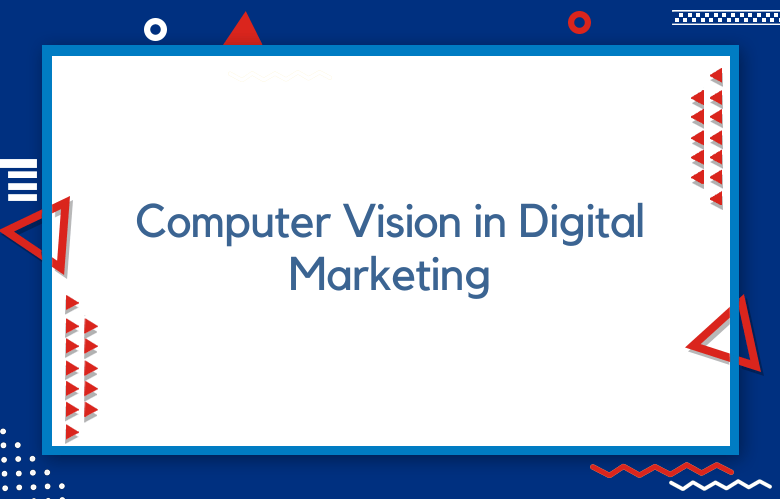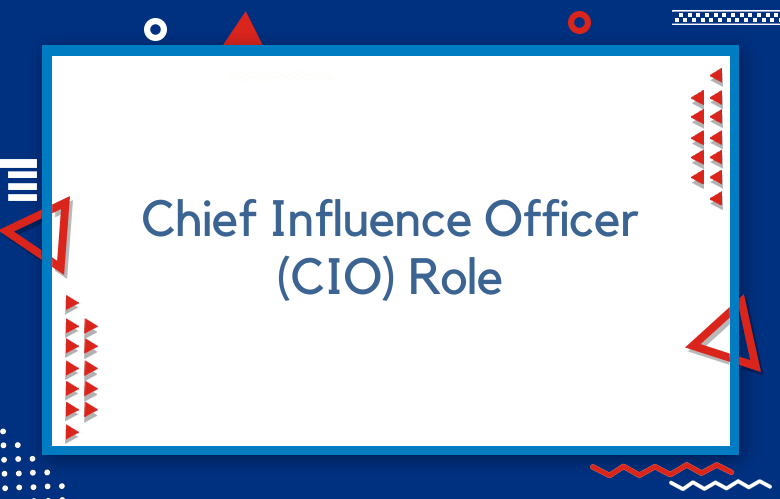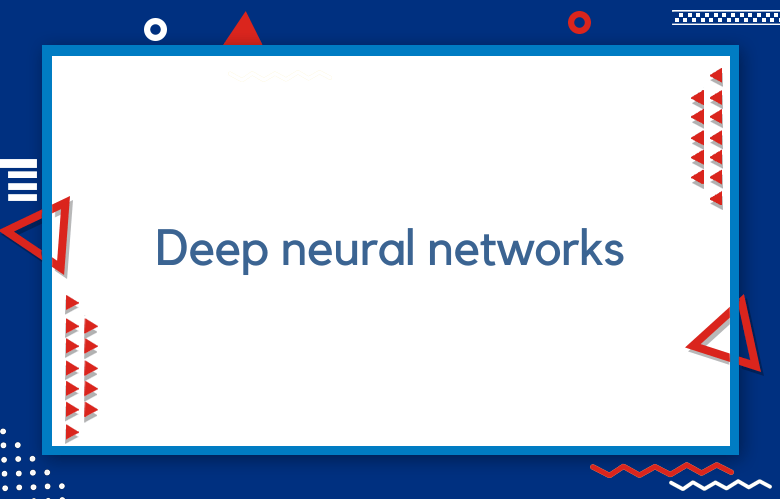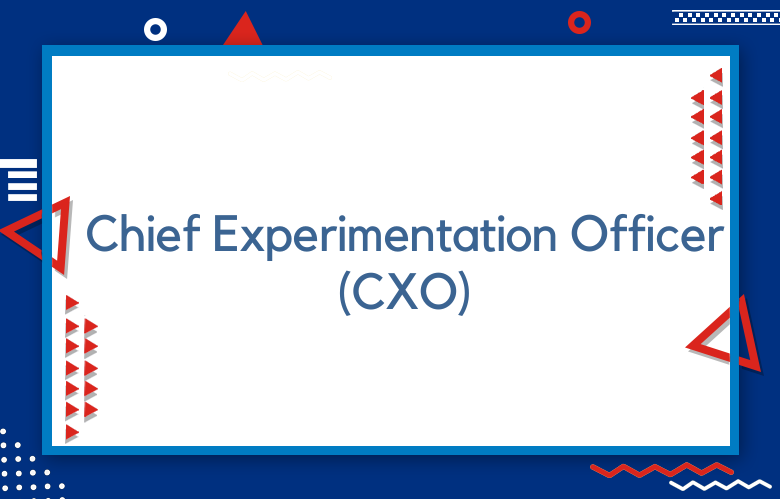The Impact of Computer Vision in Digital Marketing

With the rapid pace of technological advancement, computer vision has emerged as a game-changer in digital marketing. In layperson’s terms, computer vision refers to the ability of machines to identify, interpret, and understand visual data from the world.
Advanced algorithms and processing capabilities have made it possible for computer vision to play a critical role in online marketing. We will explore the impact of computer vision in digital marketing, from enhancing user experience to automating tasks to boosting sales.
Computer vision is a branch of artificial intelligence that focuses on developing algorithms and techniques that enable computers to interpret and extract useful information from images and videos.
In today’s world, computer vision has become an integral part of digital marketing. By leveraging the power of computer vision, businesses can gain valuable insights into customer behavior, enhance their customer experience, and improve their marketing strategies. Explores the impact of computer vision in digital marketing.
Image Search and Content Discovery
The advent of search engines has revolutionized how we find information online. Nowadays, we can quickly get our hands on all kinds of data and research in just a few clicks. One area where search engines have particularly thrived is Image Search and Content Discovery.
With Image Search, millions of images from across the web are indexed and easily accessible to anyone with an internet connection. From picture galleries to high-resolution photos, users can easily find the exact images they are looking for with the help of intelligent algorithms and keywords.
Content Discovery, on the other hand, provides users with suggestions and recommendations based on their previous searches and browsing history. Powered by sophisticated algorithms, content discovery aims to bring users closer to the content that best meets their interests and preferences.
Image Editing and Optimization
Image editing and optimization refer to manipulating digital images to enhance visual appeal and quality.
This is crucial to creating high-quality visuals for websites, social media, and marketing materials. An expertly edited and optimized image can catch viewers’ attention, convey a message, and drive conversions.
Image editing involves various techniques, such as cropping, resizing, color correction, and retouching, to name a few. These techniques can enhance an image’s clarity, contrast, brightness, and color balance, among other things.
For instance, cropping an image can help to remove unwanted elements, while color correction can adjust the color saturation and hue to achieve a specific visual effect.
Improving Customer Engagement
Improving customer engagement has become vital for businesses in achieving sustainable growth and profitability.
With the rapid development of advanced technologies and widespread adoption, customers today can access many options while making purchase decisions. Hence, achieving customer loyalty has become a challenging task for companies.
Businesses have focused on enhancing customer engagement by leveraging various mediums to address this challenge.
For instance, social media platforms, interactive mobile apps, chatbots, and personalized emails have become commonplace tools companies use to engage with their customers.
Visual Listening for Better Customer Insights
Visual listening refers to analyzing visual content, such as images, videos, and graphics, to gain insights into customer behavior, preferences, and emotions.
With the increasing popularity of social media platforms, visual listening has become a crucial tool for businesses to understand their customers better and improve their marketing strategies.
By analyzing images and videos posted by customers on social media, businesses can identify trends in customer behavior, such as what products are most popular or what styles are in fashion.
Visual listening can help businesses understand customers’ emotions and sentiments about their brand and products.
For example, by analyzing customers’ facial expressions and body language in images and videos, businesses can gauge their satisfaction level and identify improvement areas.
The Future of AI in Marketing
Artificial intelligence (AI) is set to play a crucial role in the future of marketing. Technological advancements allow businesses to automate specific marketing tasks and gain valuable insights into customer behavior and preferences.
One of the key areas where AI is already being implemented is predictive analytics. By analyzing vast amounts of data, AI algorithms can accurately predict future customer behavior and preferences, allowing marketers to tailor their strategies accordingly.
For example, an AI-powered system can predict which customers will likely buy a particular product, allowing marketers to target those individuals with personalized ads or promotions.
The Impact of Computer Vision and LLMs on the Future of AI Marketing Technologies
The emergence of computer vision and language modeling techniques has dramatically transformed the landscape of AI marketing technologies.
These innovative technologies have revolutionized how businesses collect and process data and opened up many possibilities for companies to engage with their target customers in more personalized and effective ways.
Computer vision, for instance, has enabled marketers to quickly extract valuable insights from visual data, such as images and videos.
By leveraging sophisticated computer algorithms, marketers can quickly and accurately analyze consumer behavior, preferences, and sentiments toward particular products or services.
This, in turn, helps businesses create more accurate marketing campaigns customized to meet their customers’ specific needs and demands.
The Impact of Computer Vision and LLMs on AI Technologies
Computer vision and language models are two of the most crucial building blocks of Artificial Intelligence (AI) technologies.
These technologies have drastically transformed how we perceive and interact with the world.
With the help of computer vision and LLMs, machines can now recognize, understand, and interpret visual and linguistic data in a way that was once thought only possible for human beings.
Computer vision enables machines to recognize objects, people, and environments with the help of digital sensors and cameras. This technology has become an essential tool in various industries, such as medical imaging, robotics, and autonomous vehicles, to name a few.
The impact of computer vision is particularly noteworthy in biometrics, where facial recognition systems and fingerprint sensors have revolutionized identity verification and access control systems.
How Computer Vision and LLMs are Shaping the Future of AI Technologies
Computer vision and LLMs (Language Model-Based Methods) are two of the most promising technologies in artificial intelligence.
Together, they are helping to shape the future of AI technologies in countless ways, from improving image recognition and speech translation to automating customer service and enhancing human-machine collaboration.
Computer vision technologies enable machines to understand and interpret visual information from the real world.
This is achieved by processing and analyzing various optical data inputs, including images, videos, and 3D models.
With the help of machine learning algorithms, computer vision systems can learn to recognize and classify objects, people, and scenes with incredible speed and accuracy. This has led to numerous applications in various sectors, including healthcare, manufacturing, transportation, and entertainment.
The Future of AI Technologies: Revolutionized by Computer Vision and LLMs
Artificial Intelligence (AI) has been at the forefront of technological advancements over the past few decades. AI refers to developing intelligent machines capable of performing tasks that typically require human intervention.
The field of AI has increased, and with the emergence of computer vision and Language Model-based Learning (LLMs), it is set to revolutionize our world.
Computer vision is a field of study that revolves around enabling machines to interpret and understand visual data.
It involves using algorithms and mathematical models to analyze images and extract meaningful information. This technology has been used in various applications, including medical imaging, self-driving cars, and surveillance systems.
The ability of machines to interpret and understand visual data has provided enormous benefits to society, which was previously impossible with traditional computing methods.
Advancements in AI Technologies Driven by Computer Vision and LLMs
Artificial intelligence (AI) technology advancements have been mainly driven by computer vision and large language models (LLMs) in recent years.
Computer vision, which involves training AI systems to interpret and understand visual data from the world around them, has significantly advanced the capabilities of AI algorithms. This has led to significant developments in robotics, self-driving cars, and image processing.
One of the most well-known examples of computer vision in action is facial recognition technology.
This technology enables computers to identify and match faces by analyzing features such as the shape of the beginning, the position of the eyes, and the length of the nose.
This has significant security implications, allowing more accurate tracking and identification of individuals in public spaces.
Unleashing the Potential of AI Technologies with Computer Vision and LLMs
Artificial intelligence (AI) technologies have rapidly grown and evolved in recent years, with significant contributions from computer vision.
Computer vision, as a subset of AI, is concerned with developing algorithms and technologies that enable a machine to interpret, analyze, and understand visual data from the world around us.
This capability has been used in various applications, ranging from facial recognition and image processing to object detection and autonomous vehicles.
One significant advancement in computer vision has been the development of large language models (LLMs). LLMs leverage deep learning techniques to model the complex relationships between words and their meanings, allowing machines to understand natural language text and speech.
This has enabled the development of AI-powered chatbots, natural language processing tools, and even intelligent writing assistants that can generate coherent and relevant text.
Generative AI in AR Advertising
Generative AI has been in the limelight for a while now in augmented reality (AR) advertising. With the advancement of technology, AI can now generate high-quality 3D assets and animations for AR advertising campaigns.
Such AI-driven AR advertising techniques are being adopted by many brands, primarily due to their ability to produce personalized, engaging, and immersive AR experiences efficiently.
In essence, generative AI enables advertisers to create AR advertising units in real time based on specific user behavior, preferences, and even location.
This technology can generate 3D models, animations, and scenes that can be customized and adapted to the target audience, thereby giving rise to highly engaging AR ad experiences.
Transforming marketing and Advertising with Generative AI
Generative AI rapidly transforms the advertising and marketing world by providing innovative tools and strategies that allow brands to connect with their target audiences more effectively.
This cutting-edge technology uses sophisticated algorithms to generate creative and impactful content that resonates with viewers, facilitating more efficient and successful marketing campaigns.
One of the most significant advantages of using Generative AI is that it enables businesses to create personalized content for their customers.
With the vast amount of data and information available on consumer preferences, the technology can analyze and synthesize this data to generate unique and targeted content for each viewer. This leads to higher engagement and conversion rates, as consumers feel more valued and engaged with the brand.
The Impact of Generative AI on Marketing and Advertising
Generative AI has begun to make waves in marketing and advertising, transforming how businesses can reach their audience and craft personalized campaigns.
With the help of AI, marketers can now generate original content, targeted advertising, and engaging social content tailored to specific audiences.
Creating content at scale without sacrificing quality or relevance is a significant advantage of these new capabilities. This is due to the power of AI algorithms to learn and understand consumer behavior, analyze vast amounts of data, and generate unique content tailored to each user.
In this way, generative AI has the potential to revolutionize marketing and advertising by optimizing campaigns, reducing costs, and boosting engagement rates.
Enhancing Creativity and Personalization in Marketing with Generative AI
Generative AI technology has revolutionized the marketing landscape by offering an effective solution for generating creative and personalized content.
This novel approach enables brands to leverage the power of AI to create compelling and engaging content that resonates with target audiences.
Unlike traditional marketing techniques that rely on generic messaging, Generative AI technology allows brands to create bespoke campaigns tailored to specific customer needs and preferences.
One of the main benefits of Generative AI is its ability to generate unique and original content. By leveraging machine learning algorithms, the technology can cause various content variations tailored to specific customer segments.
For instance, an e-commerce retailer can use Generative AI to generate product descriptions customized to suit individual customer preferences and tastes. This not only helps to enhance the customer experience but also increases brand engagement and loyalty.
Optimizing Marketing Strategies with Generative AI Insights
The ever-changing marketing landscape can be overwhelming for marketers constantly seeking effective strategies to drive business growth.
However, today’s advancements in artificial intelligence offer a game-changing solution to overcome this challenge. By harnessing the power of generative AI, marketers can gain invaluable insights that can be leveraged to optimize their marketing strategies.
Generative AI is a subset of artificial intelligence focusing on creating content, ideas, and insights like human creativity.
This revolutionary technology relies on algorithms that learn from data, enabling marketers to quickly analyze large amounts of data, identify patterns, and leverage these insights to create more impactful marketing strategies.
Harnessing Generative AI for Innovative Marketing and Advertising
The development of Generative AI has opened up a whole new horizon for the world of marketing and advertising. This technology allows businesses to create intelligent and personalized ads that suit individual customers’ preferences.
This saves time and effort and ensures a higher conversion rate and customer satisfaction.
Generative AI algorithms use machine learning and natural language processing to learn from a vast amount of data and generate new content based on that.
This can be leveraged in advertising by creating unique and engaging ads specific to the customer’s interests, behavioral patterns, and demographic information.
Generative AI can also create dynamic ad formats that automatically adjust to the available space and deliver a seamless user experience.
The Role of Generative AI in Sparking Creative Marketing Ideas
The Role of Generative AI in Marketing
Generative AI is transforming marketing by providing marketers with new data-driven insights. It helps marketers understand that customers respond better to personalized content than generic ads.
Generative AI can analyze massive amounts of customer data and identify patterns and behavior traits that marketers can use to devise customized campaigns.
By identifying customer preferences, Generative AI can also suggest new ideas for products or services that could appeal to a specific target audience, help businesses innovate, and stay ahead of their competitors.
Generative AI in Content Marketing
Content marketing involves creating tailored content that caters to specific audience segments. With Generative AI, marketers can use data analysis to develop more personalized narratives, generate creative ad content, or develop new product ideas.
In short, Generative AI enhances customer engagement by taking it a step further to create more human-like content that resonates with people personally and makes them feel understood.
Generative AI in Design
Generative AI can use machine learning algorithms to analyze and study design trends, which can be used to automate the creation and design of different marketing content, such as graphics and videos.
Generative AI can analyze thousands of images, videos, and other content to identify visual patterns, themes, and motifs and then use this information to develop new designs and graphics.
This can help marketers differentiate their brand by delivering unique visual content reflecting its story and messaging.
Implications for Businesses
Accessing Generative AI-driven insights and creative ideas will be critical to future business success stories. As we begin to understand the potential contribution of Generative AI to marketing, it may be worth investing in the resources necessary to integrate this technology into your own business.
By implementing Generative AI in your marketing strategies, your business can develop innovative ideas to attract more leads and customers while strengthening your brand’s identity, providing a more personalized experience, and ultimately increasing your bottom line.
Personalizing Marketing Campaigns with Generative AI Technology
Personalizing marketing campaigns has become more critical than ever in today’s digital age.
Consumers are bombarded with countless ads and messages daily, so they have become desensitized to generic marketing tactics and yearn for a more personalized experience. This is where generative AI technology can provide a solution.
Generative AI technology allows marketers to create unique and personalized content for individual consumers.
Generative AI algorithms can generate specific messages, images, and videos tailored to a particular consumer’s interests and preferences by analyzing vast amounts of data such as browsing behavior, search history, and previous purchases.
This level of personalization not only enhances the overall customer experience but also increases the likelihood of conversion.
Leveraging Generative AI for Data-Driven Marketing Optimization
As the business world becomes increasingly data-driven, marketers seek new and innovative ways to optimize their campaigns and achieve better results. In recent years, one technology that has emerged as a powerful tool for achieving this goal is generative artificial intelligence.
Generative AI is a machine learning technology that enables computers to generate new content or data similar to existing examples. This technology is particularly well-suited for marketing because it can create personalized content and offers tailored to individual customers.
For example, a company using generative AI might analyze customer data to identify patterns and preferences. It could then use this information to generate personalized emails, landing pages, or social media posts designed to resonate with each customer.
Exploring the Potential of Generative AI in AR Advertising
As technology continues to advance, the possibilities for innovative advertising strategies expand. One such process gaining attention is using Generative AI in Augmented Reality (AR) advertising.
Generative AI refers to using artificial intelligence to create or generate content autonomously without human intervention. This technology can be implemented in AR advertising to create immersive and interactive advertising experiences that engage consumers and increase brand awareness.
Advertisers can use generative AI to develop custom AR filters, avatars, and animations tailored to their target audience. These AR experiences can be designed to showcase products or services uniquely and engagingly, creating a memorable and personal connection with potential customers.
Unleashing the Power of Generative AI in the Advertising Industry
Artificial Intelligence (AI) has revolutionized the marketing industry to a great extent. With the introduction of Generative AI, marketers can now leverage machine learning algorithms to generate content that can attract, engage, and retain customers.
Generative AI is an advanced technology that uses natural language processing and deep learning to create content similar to that produced by humans.
One of the significant benefits of Generative AI in the advertising industry is its ability to support the creation of relevant and personalized content for customers.
With the ever-increasing competition in the sector, personalized content is essential to stand out from the crowd. Generative AI can analyze and understand customer preferences, behaviors, and interests and use this data to create customized content that resonates with the customers.
Conclusion
Computer vision can potentially revolutionize the digital marketing landscape. From improving the user experience to boosting sales and revenue, this advanced technology provides endless opportunities for businesses to elevate their marketing strategies.
By embracing computer vision and staying ahead of the curve in digital marketing, companies can gain a significant competitive advantage in an increasingly crowded online marketplace.
We’re excited to see the continued development of computer vision technology and its impact on the future of digital marketing.
In conclusion, computer vision technology is becoming increasingly popular in digital marketing.
By leveraging the power of computer vision, businesses can gain valuable insights into customer behavior, enhance their customer experience, and improve their marketing strategies.
The above-discussed areas of product recommendations, image recognition software, virtual try-on, visual search, and ad targeting are just a few examples of how computer vision technology is transforming the digital marketing landscape. As computer vision technology continues to develop, the possibilities for its application in digital marketing are endless.
Call: +91 9848321284
Email: [email protected]



